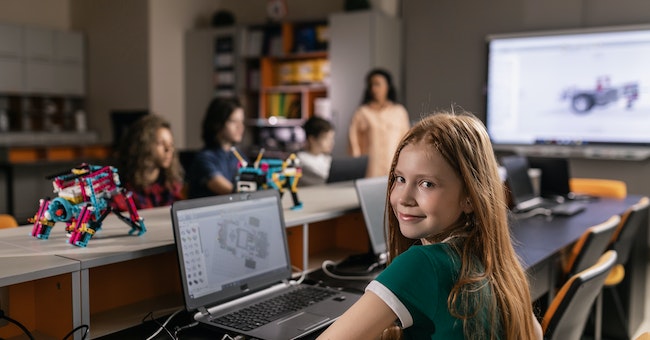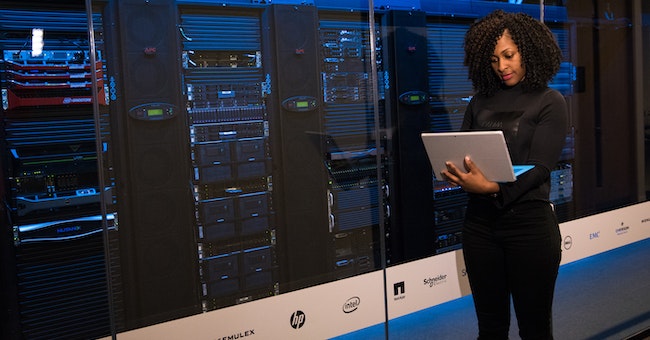The Fascinating World of Robotics: Exploring the Past, Present, and Future

Introduction
In a world rapidly advancing with technology, robotics has emerged as a transformative field that captures both our imagination and practicality. From science fiction tales of intelligent androids to real-world applications in industries ranging from healthcare to manufacturing, robotics is reshaping the way we live, work, and interact. In this blog, we delve into the captivating realm of robotics, exploring its history, current advancements, and the exciting future it holds.
The Evolution of Robotics: A Historical Journey
The roots of robotics trace back to ancient civilizations' myths and legends featuring automated beings. However, the modern concept of robotics truly began in the 20th century. The term "robot" was first coined by Czech writer Karel Čapek in his play "R.U.R." (Rossum's Universal Robots) in 1920. It introduced the world to artificial creatures designed to perform tasks, albeit with unintended consequences.
Fast forward to the 1950s, when the first industrial robots emerged on factory floors. These machines, developed by pioneers like George Devol and Joseph Engelberger, were designed to handle repetitive and dangerous tasks, revolutionizing manufacturing processes.
Current Landscape: Robotics in the Present Day
Today, robotics is a multidisciplinary field encompassing mechanical engineering, electronics, artificial intelligence (AI), computer science, and more. The contemporary landscape of robotics is marked by impressive achievements that have transformed industries and everyday life:
Industrial Robotics: Robots in manufacturing have evolved from performing simple tasks to intricate operations, enhancing efficiency and precision. They assemble cars, package goods, and handle delicate procedures in sectors like pharmaceuticals.
Medical Robotics: Surgeons now use robotic systems for minimally invasive procedures, enabling enhanced precision, smaller incisions, and quicker recovery times.
Service Robotics: Robots assist in various service sectors, from hospitality to customer service. Autonomous vacuum cleaners and food delivery robots are becoming common sights.
Agricultural Robotics: Robots are revolutionizing farming with automated planting, harvesting, and monitoring systems, contributing to sustainable agriculture practices.
Exploration and Research: Robots like NASA's rovers and the humanoid robot Sophia are pushing the boundaries of space exploration and human-robot interaction.
Education and Research: Robotics kits and platforms are fostering STEM education by encouraging hands-on learning and creativity.
The Rising Stars: AI and Autonomous Robots
Artificial Intelligence is a driving force behind modern robotics, enabling machines to learn, adapt, and make decisions. Machine learning and neural networks empower robots to process data, recognize patterns, and respond intelligently. Autonomous robots, equipped with sensors and AI algorithms, navigate complex environments, making decisions in real-time. Self-driving cars and drones are prominent examples, revolutionizing transportation and logistics.
Challenges and Ethical Considerations
As robotics advances, it brings forth challenges that require thoughtful consideration. Job displacement due to automation, privacy concerns regarding AI-powered surveillance, and ethical questions surrounding human-robot relationships are topics that demand careful reflection. Striking a balance between progress and societal impact is crucial to ensuring that robotics enhances our lives while addressing potential drawbacks.
The Promising Future of Robotics
The future of robotics holds immense potential, with exciting developments on the horizon:
Collaborative Robots (Cobots): Robots designed to work alongside humans safely, enhancing productivity and safety in industries like manufacturing and healthcare.
Soft Robotics: Soft, flexible robots mimic biological organisms, offering adaptability for tasks like delicate surgery or exploring challenging terrains.
Biomedical Robotics: Robots assisting in medical diagnosis, drug delivery, and surgery could revolutionize healthcare outcomes.
Swarm Robotics: A collective approach where multiple robots work together to achieve complex tasks, inspired by the behavior of social insects.
Human-Robot Interaction: Developments in natural language processing and emotional intelligence are paving the way for more intuitive and empathetic interactions between humans and robots.
Recommended Online Resources for Robotics
Free Robotics Tutorial - Introduction to Robotics & Autonomous Car Design
Unlock the world of robotics and autonomous car design with this free tutorial. Dive into the fundamentals of robotics and engineering, and learn to craft your own self-driving wheeled robot. From inception to creation, this course equips you with the knowledge and skills required for autonomous car design.
Course highlights:
Exciting Introduction to Robotics: Dive into the captivating realm of robotics and autonomous car design.
Fundamentals of Engineering: Grasp the basics of engineering and its role in robotics.
Craft Your Own Self-Driving Robot: Learn to design, build, and program a self-driving wheeled robot.
Autonomous Car Design: Explore sensors, actuators, and control systems crucial for autonomous vehicles.
Hands-On Learning: Gain practical experience through maze navigation and line-following challenges.
Applied Knowledge: Apply your skills to creating self-driving car designs and other robotic projects.
Lucrative Career Paths: Discover opportunities as robotics engineers, autonomous vehicle engineers, AI engineers, and robotics technicians.
Education Paths: Consider pursuing degrees in robotics engineering, autonomous vehicle engineering, artificial intelligence, or computer science to enhance your career prospects.
Embark on the journey into Robotics: Aerial Robotics, an online course introducing the mechanics of flight and quadrotor flying robot design. Explore dynamic models, controllers, and planners for three-dimensional environments, addressing challenges of noisy sensor usage for localization and navigation. Gain insights into the burgeoning drone industry's applications and complexities.
Course highlights:
Mechanics of Flight: Learn the fundamentals of flight mechanics and dynamics.
Quadrotor Design: Dive into designing quadrotor flying robots for various applications.
Dynamic Models and Controllers: Understand dynamic models, controllers, and planners for 3D environments.
Sensor Challenges: Tackle the complexities of using noisy sensors for localization and maneuvering.
Drone Industry Insights: Gain valuable insights into the growing drone industry's possibilities and challenges.
How to Start with Robotics? for Absolute Beginners || The Ultimate 3-Step Guide
This beginner-friendly course provides an essential 3-step guide to starting your journey in robotics. Learn the foundational steps to enter the exciting world of robotics:
Programming Language: Begin with the basics of programming using C.
Electronics: Discover the essentials of electronics through hands-on learning with Arduino.
Robot Kit: Explore the final step by getting a robot kit and learning how to program it. By the end of this course, you'll be well-equipped to embark on your robotics journey.
Course highlights:
3-Step Guide: Clear roadmap: Programming Language, Electronics, Robot Kit.
Programming Language: Start with beginner-friendly C programming language.
Electronics Essentials: Learn vital electronics principles using Arduino projects.
Hands-On Approach: Practical learning with Arduino board and projects.
Robot Kit Application: Apply skills by programming and using a robot kit.
FAQs
Q: How can I get started with robotics?A: Start by learning programming languages like C or Python. Acquire basic electronics knowledge and experiment with projects using platforms like Arduino. As you gain experience, you can explore more advanced topics and work on robot-building kits.
Q: What programming languages are used in robotics?A: Common programming languages for robotics include C, Python, Java, and MATLAB. The choice depends on the application and platform.
Q: Can I build a robot without a technical background?A: Yes, with dedication and access to online resources, you can start learning about robotics even without a technical background. Start with basic concepts, programming, and simple projects before moving on to more complex topics.
Q: Are there career opportunities in robotics?A: Yes, robotics offers a wide range of career opportunities. Roles include robotics engineer, software developer, mechanical engineer, control systems engineer, AI specialist, and more. The demand for robotics expertise is growing across industries.
Q: Is robotics only about building physical robots?A: No, robotics also includes areas like simulation, control algorithms, AI-driven decision-making, and software development for robotic applications.
Q: Can I specialize in a specific type of robotics?A: Yes, you can specialize in fields like industrial robotics, medical robotics, autonomous vehicles, underwater robotics, aerial drones, and more, depending on your interests and career goals.
Conclusion
In conclusion, robotics is an ever-evolving field that marries technology and innovation. From its humble beginnings as a concept in literature to its present-day impact on industries worldwide, robotics has reshaped the way we perceive automation, efficiency, and human-machine collaboration. As we venture into the future, the intersection of robotics with AI, machine learning, and other technologies promises a world where robots are not only tools but companions, partners, and catalysts for human progress.





